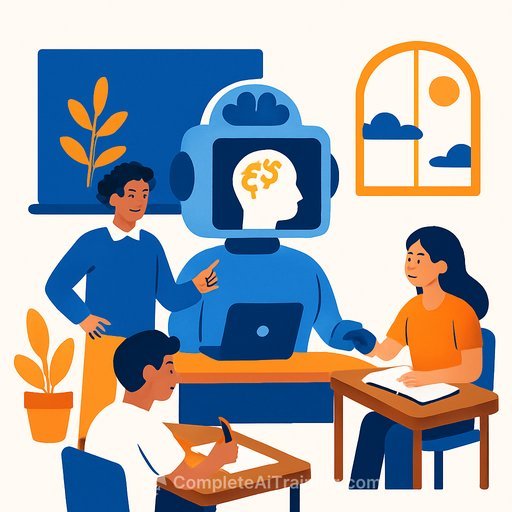How to test GenAI's impact on learning
GenAI in higher education triggers two reactions: excitement and fear. Skip both. Run small, cheap experiments that show what it changes in your classroom and what it doesn't. Treat opinions as hypotheses and let results lead.
1) Run group experiments
Split students into three seminar groups: one barred from AI, one allowed to use AI with no guidance, and one trained in structured prompting and critique. Use blind grading across recall tests, essays and presentations to compare outcomes.
In a two-year classroom experiment, AI had no effect on memory: multiple-choice recall stayed the same across groups. Trained prompting and critical evaluation did improve reasoning and writing quality. Your field may differ-test it.
- Assess: recall (MCQ), argument quality, clarity, citations, presentation logic
- Keep rubrics constant; run for multiple weeks to reduce noise
2) Build an AI research assistant
Have each student or group build a "daily digest" of news or scholarship tied to the course. They pick a foundation model, feed it the course manual, and craft prompts to surface relevant items.
At the start of each class, compare outputs: which sources get surfaced, what arguments are missed, how tone shifts by model, and which prompt tweaks improve balance and clarity. You'll get a living, evolving reading log and a shared record of model bias and prompt effects.
- Deliverable: link to digest + prompt sheet with prompt iterations
- Classroom review: 5-minute debrief per team on sources and misses
3) Compare outputs
Assign a dense text (court opinion, academic article, data report). First, students write their own summaries without AI. Then generate summaries from at least two models and compare in class.
Expect style differences. For example, GPT-4o often produces longer answers than Claude Sonnet 4, which opens a useful discussion: do your stakeholders want depth or crispness? Close by verifying machine summaries against the original text and the student versions.
4) Turn AI into a Socratic partner
Let AI play tutor, client or judge. Students use AI to cross-examine, question assumptions or push on weak arguments. Use built-in "study modes" where available, or create a custom model trained on course materials.
The goal is repetitions. Students practice questioning, defending, revising, and see that interrogating a machine is part of thinking like a professional.
5) Ask them how it feels
After AI-assisted work, run a short reflection survey or a round table. Separate reactions to idea generation from grammar or citation help.
In practice, many students feel uneasy when AI proposes core arguments but welcome grammar fixes or citation clean-up. Track this over time-metacognition about where to lean on AI becomes a learning outcome.
6) Ban uniform bans
AI won't rescue or ruin higher education, but it will move the lines. The task is to separate good uses from bad ones, not to standardize a single rule.
Give faculty room to experiment, share results and adapt. Classrooms should act as labs, not battlegrounds for speculation.
Quick setup guide
- Define outcomes: recall, reasoning, writing, presentation
- Pick tools: at least two different models for comparison
- Design controls: blind grading, common rubrics, consistent prompts
- Collect data: scores, examples, student reflections, time-on-task
- Review monthly: adjust prompts, tasks and grading criteria
Ethics and policy guardrails
- Disclosure: require students to note if/where AI was used and paste key prompts
- Integrity: define AI-allowed vs AI-barred tasks; vary by assignment type
- Privacy: avoid uploading sensitive data; use institution-approved tools
- Bias: compare outputs across models; teach verification practices
What to expect (probable patterns)
- Memory: little to no change on basic recall without targeted practice
- Reasoning and writing: improvements when students are trained to prompt, critique and revise
- Speed: faster comprehension with model summaries, but verification remains essential
If you want a broader policy context, see UNESCO's guidance on AI in education for high-level guardrails and risks here. For faculty building prompt skills, browse practical resources on prompt engineering here.
The bottom line: stop guessing. Run the six activities above, measure, and iterate. Let your own data set the policy.
Your membership also unlocks:






